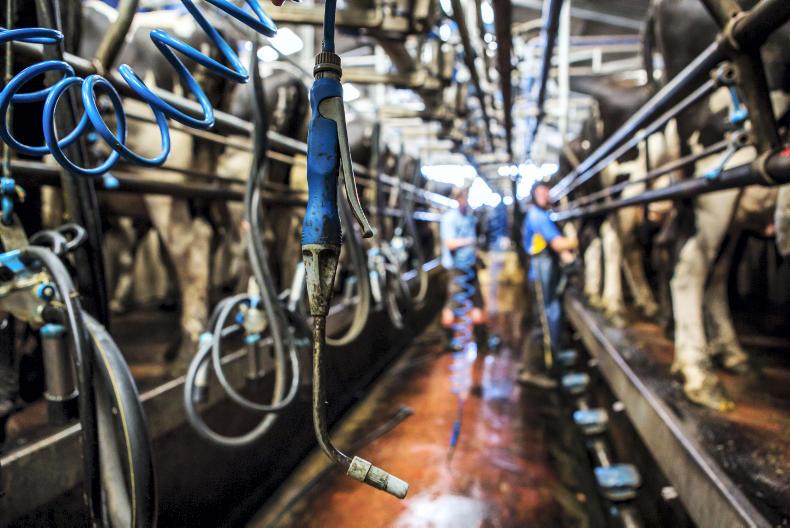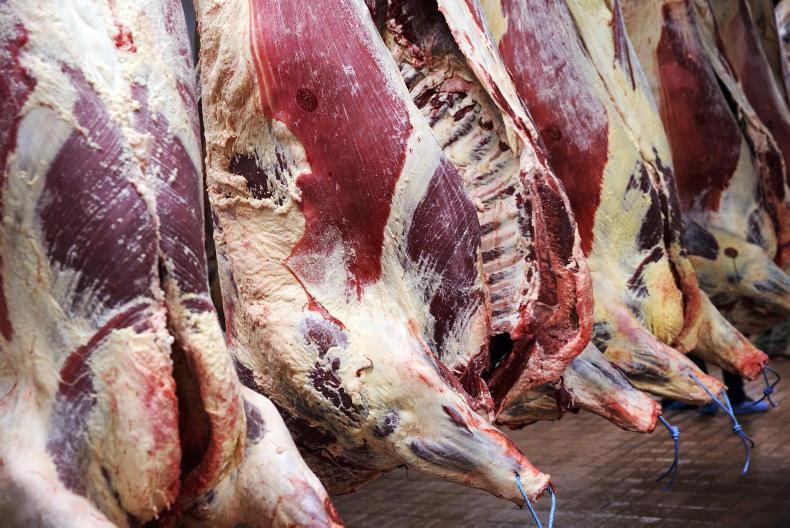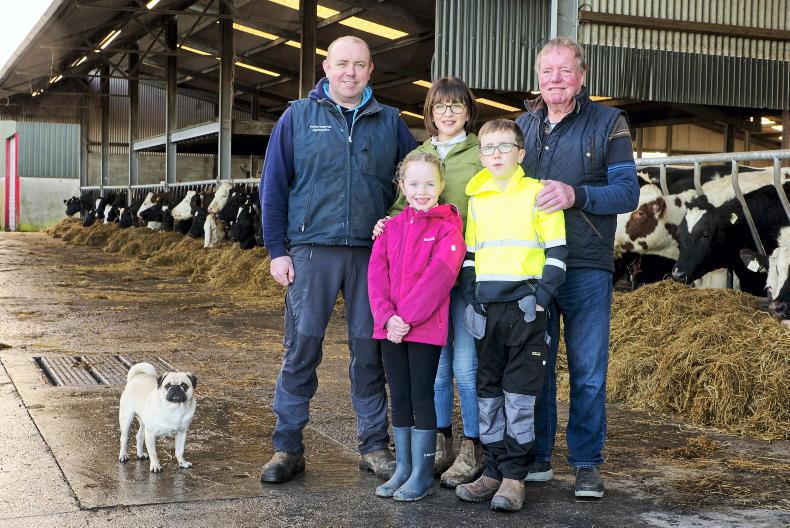Developing an accurate record of all farm working expenses was one of the first steps that Dairylink Ireland adviser Conail Keown carried out with some phase two farmers when they joined the programme earlier this year.
This gives a comprehensive understanding of each business’s cost base and, when compared against income, shows the profitability of the business in cash terms.
Knowing this allows budgets to be made for the following 12 months and gives a clear indication of where changes to the cost base need to be made.
With milk prices remaining relatively strong for the past 18 months, many dairy farmers have not been tracking costs as closely as they were during 2015 and 2016. This has meant that some dairy farms have slipped into a high-cost-of-production system without realising it.
As a starting point, Conail suggests that farmers should look at their current account balance and compare it with the same time last year.
“You have to be realistic and ask yourself ‘how much more money is there in my account after 12 months of dairy farming’,” he said.
Any capital expenditure that was paid for from cash reserves over the past year will skew this indicator slightly, but the exercise is useful in showing how much surplus cash the business has generated.
Although it can have tax implications, setting cash aside is important so that the farm business can cope if it becomes loss-making during a downturn in milk prices.
Performance
The best indicator of financial performance is to list all farm working expenses for the past 12 months and compare it against all receipts (income) for the same period. It will show cost of production and profitability in cash terms.
Increased meal price has been a major contributor to rising production costs on project farms throughout 2018. On average, dairy concentrates are up by around £45/t to £265/t at present.
On a dairy farm feeding 2.5t/cow/year, this 20% increase in meal price has had the same impact on concentrate costs as feeding an extra 500kg/cow/year. This has made it even more important to use concentrates efficiently by targeting meal at cows that will respond by putting more milk in the bulk tank.
“Dairylink farmers are also looking at their cost base and differentiating between what is nice and what is necessary. Planning ahead for the next 12 months on a realistic milk price will focus minds on cost control,” Conail said.
Efficient meal feeding to reduce cost base
The example of farm working expenses outlined in Table 1 is for a Dairylink Ireland farmer for the 12 months to the end of November 2018. It includes all costs associated with the business, as well as £30,000 for drawings, which is a standardised figure used across all Dairylink farms.
Total farm working expenses over the period come to 32.02p/l. This compares with 32.86p/l for total receipts which is made up of milk sales (30.06p/l), cull cow sales (2.04p/l) and calf sales (0.76p/l). The figures indicate that the farm business made a small profit in 2018 before CAP payments are considered.
Dairylink adviser Conail Keown has worked with the farmer to develop a budget for 2019 and a plan to achieve the targets. The main change for next year is to lower concentrate costs by reducing feed rate from 3t/cow/year to 2.7t/cow/year.
Conail said that this can be done by replacing some concentrates in the diet with more grazed grass, especially for later-lactation cows in the spring. “Better grazing management will play a key role and will make a difference even before we talk about growing more grass through improving soil fertility and reseeding,” he maintained.
Steps are also being taken to improve herd fertility by culling cows that are slow to get in-calf. This means there will be fewer stale cows and more early-lactation cows that can better respond to concentrates.
Yield
Production is also expected to be 5.6% higher next year (equal to a yield increase of 450 litres/cow/year) due to fewer stale cows in the herd. This means all costs are lower in the 2019 budget on a per-litre basis.
Machinery costs are set to reduce next year, as two new implements were paid for from cash reserves during 2018 which increased overall costs this year.
The 2019 budget is not a cost-cutting exercise across the board. Table 1 shows that livestock purchases are set to increase next year, as heifers are bought in to replace late-calvers. Likewise, concentrates for young stock will increase, as there will be more heifer calves born early in the autumn, making them suitable as replacements.
The 2019 budget makes various assumptions with prices. For example, concentrates are taken at £250/t. These projections can be revised as the year goes on.
Total income for next year is also estimated and comes to 30.64p/l. This comes from a conservative milk sales estimate (26p/l), cull cow sales (1.86p/l), calf sales (1.06p/l) and sales of surplus heifers (1.72p/l).
Read more
Watch: switching to a flying herd in Co Antrim
Targeting meal to freshly calved cows
Developing an accurate record of all farm working expenses was one of the first steps that Dairylink Ireland adviser Conail Keown carried out with some phase two farmers when they joined the programme earlier this year.
This gives a comprehensive understanding of each business’s cost base and, when compared against income, shows the profitability of the business in cash terms.
Knowing this allows budgets to be made for the following 12 months and gives a clear indication of where changes to the cost base need to be made.
With milk prices remaining relatively strong for the past 18 months, many dairy farmers have not been tracking costs as closely as they were during 2015 and 2016. This has meant that some dairy farms have slipped into a high-cost-of-production system without realising it.
As a starting point, Conail suggests that farmers should look at their current account balance and compare it with the same time last year.
“You have to be realistic and ask yourself ‘how much more money is there in my account after 12 months of dairy farming’,” he said.
Any capital expenditure that was paid for from cash reserves over the past year will skew this indicator slightly, but the exercise is useful in showing how much surplus cash the business has generated.
Although it can have tax implications, setting cash aside is important so that the farm business can cope if it becomes loss-making during a downturn in milk prices.
Performance
The best indicator of financial performance is to list all farm working expenses for the past 12 months and compare it against all receipts (income) for the same period. It will show cost of production and profitability in cash terms.
Increased meal price has been a major contributor to rising production costs on project farms throughout 2018. On average, dairy concentrates are up by around £45/t to £265/t at present.
On a dairy farm feeding 2.5t/cow/year, this 20% increase in meal price has had the same impact on concentrate costs as feeding an extra 500kg/cow/year. This has made it even more important to use concentrates efficiently by targeting meal at cows that will respond by putting more milk in the bulk tank.
“Dairylink farmers are also looking at their cost base and differentiating between what is nice and what is necessary. Planning ahead for the next 12 months on a realistic milk price will focus minds on cost control,” Conail said.
Efficient meal feeding to reduce cost base
The example of farm working expenses outlined in Table 1 is for a Dairylink Ireland farmer for the 12 months to the end of November 2018. It includes all costs associated with the business, as well as £30,000 for drawings, which is a standardised figure used across all Dairylink farms.
Total farm working expenses over the period come to 32.02p/l. This compares with 32.86p/l for total receipts which is made up of milk sales (30.06p/l), cull cow sales (2.04p/l) and calf sales (0.76p/l). The figures indicate that the farm business made a small profit in 2018 before CAP payments are considered.
Dairylink adviser Conail Keown has worked with the farmer to develop a budget for 2019 and a plan to achieve the targets. The main change for next year is to lower concentrate costs by reducing feed rate from 3t/cow/year to 2.7t/cow/year.
Conail said that this can be done by replacing some concentrates in the diet with more grazed grass, especially for later-lactation cows in the spring. “Better grazing management will play a key role and will make a difference even before we talk about growing more grass through improving soil fertility and reseeding,” he maintained.
Steps are also being taken to improve herd fertility by culling cows that are slow to get in-calf. This means there will be fewer stale cows and more early-lactation cows that can better respond to concentrates.
Yield
Production is also expected to be 5.6% higher next year (equal to a yield increase of 450 litres/cow/year) due to fewer stale cows in the herd. This means all costs are lower in the 2019 budget on a per-litre basis.
Machinery costs are set to reduce next year, as two new implements were paid for from cash reserves during 2018 which increased overall costs this year.
The 2019 budget is not a cost-cutting exercise across the board. Table 1 shows that livestock purchases are set to increase next year, as heifers are bought in to replace late-calvers. Likewise, concentrates for young stock will increase, as there will be more heifer calves born early in the autumn, making them suitable as replacements.
The 2019 budget makes various assumptions with prices. For example, concentrates are taken at £250/t. These projections can be revised as the year goes on.
Total income for next year is also estimated and comes to 30.64p/l. This comes from a conservative milk sales estimate (26p/l), cull cow sales (1.86p/l), calf sales (1.06p/l) and sales of surplus heifers (1.72p/l).
Read more
Watch: switching to a flying herd in Co Antrim
Targeting meal to freshly calved cows










SHARING OPTIONS